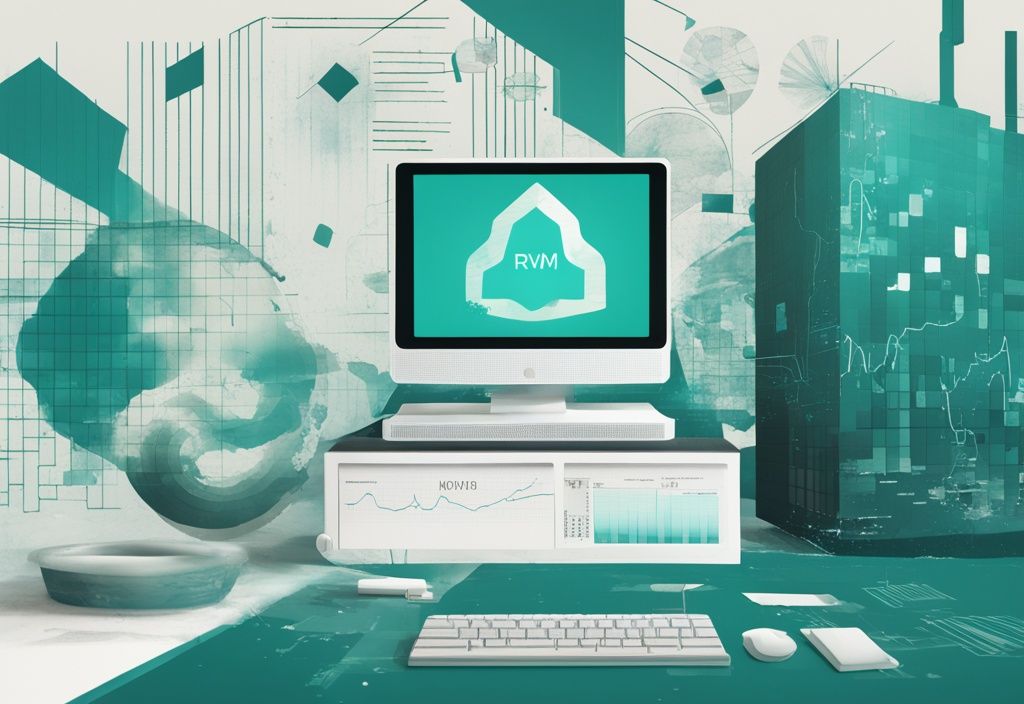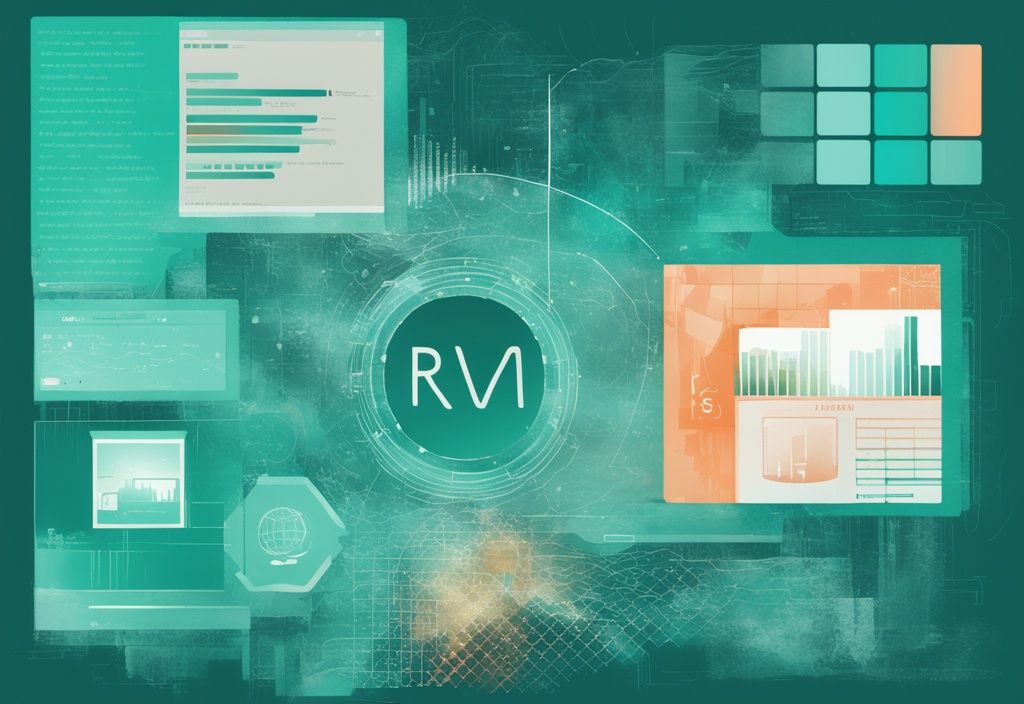Omni-science is what you need in the complicated world of real estate, isn’t it? An understanding of concepts like the REALTORS Valuation Model (RVM®) not only can elevate your venture but also has tremendous value in terms of accuracy and reliability. As an experienced real estate veteran, I know the importance of precise property estimates and it’s time you did too.
What, exactly, is RVM in real estate? To put it simply, it’s your new best friend. In the following paragraphs, we’re going to deconstruct it, to see how it empowers investors, buyers, and sellers alike in making calculated decisions.
So take a deep breath, and let me guide you through this maze as your real-life property guru. Believe me, when we’re done, you’ll view your real estate strategies through a completely transformed perspective.
Introduction to RVM® in Real Estate
The REALTORS Valuation Model® (RVM®) is an innovative property valuation tool developed by Realtors Property Resource, a subsidiary of the National Association of Realtors (NAR). This powerful model leverages a vast array of data partnerships, proprietary information, and a comprehensive public records database to deliver precise property value estimates.
Definition and Importance of RVM®
What is RVM in real estate? Simply put, RVM® is a state-of-the-art property valuation model. It integrates both on-market and off-market MLS listing data with publicly recorded sold data, offering some of the most accurate property value estimates in the industry. The model undergoes continuous validation and testing by leading independent companies, ensuring its high accuracy and reliability.
This tool is invaluable for real estate professionals, appraisers, lenders, and investors. It provides them with the data needed to make well-informed decisions, whether they are buying or selling properties. Imagine you’re about to buy a new home; having such precise valuation can make all the difference in your negotiations or final decision.
One of the unique aspects of RVM® is its rigorous testing and validation procedures, which set a benchmark for accuracy and dependability. Real estate professionals count on RVM® to generate detailed reports that clearly present a home’s estimated value. This transparency aids in negotiations and offers peace of mind to both buyers and sellers. The RVM® model is updated twice a month to reflect the latest market trends and data, ensuring you always have the most current information.
Understanding what is RVM in real estate underscores its pivotal role in today’s property market. By providing highly precise and validated property value estimates, RVM® equips all stakeholders with the essential data to navigate the complexities of real estate transactions effectively and confidently. Whether you’re selling your starter home or entering the world of property investment, RVM® is a reliable ally in your journey.

How does RVM® Work?
Data Essential for RVM® Calculations
Understanding what is RVM in real estate requires a deep dive into the types of data it utilizes. The RVM® system starts by analyzing a variety of data sources. Previous sale prices provide a historical context, while detailed property features, such as the number of bedrooms and square footage, offer specific insights. Additionally, the model takes into account local real estate trends and compares these with similar property sales in the vicinity.
By considering market movement, neighborhood influences, and property depreciation, the model ensures its valuations are reflective of current conditions. Notably, RVM® integrates both on-market and off-market MLS listing data along with comprehensive public records. This robust data set is updated twice a month, ensuring the estimates remain as current and accurate as possible.
The Role of Comparables (Comps) in RVM®
A significant facet of understanding what is RVM in real estate is its reliance on comparables, or comps. Comps refer to properties similar to the one being evaluated. These include both recently sold properties and ones currently listed on the market. For a property to be used as a comp, it must be within a 1-mile radius of the subject property and have been sold within the last 12 months.
Up to 10 properties are employed in calculating RVM® values, chosen based on their proximity and recent sale dates. This selection criteria ensures the RVM® estimates are derived from the most relevant and recent data, enhancing the accuracy of the valuation model. By scrutinizing these comps, the RVM® can generate property value estimates that real estate professionals can rely on for making informed selling or buying decisions.
Benefits of Utilizing RVM® in Real Estate
Why RVM® is Considered Accurate and Reliable
REALTORS Valuation Model® (RVM®) stands out in the realm of real estate for its accuracy and reliability. Unlike other models, RVM® provides both an estimated sales price and a valuation range, offering a comprehensive view of property values. The estimated value represents the most likely sales price, while the valuation range indicates the potential high and low prices, giving a clearer picture of market conditions.
RVM® is regularly tested by leading independent companies to ensure precision. It maintains accuracy and hit rate standards that outperform many other valuation tools on the market. This commitment to rigorous validation and testing methods means that real estate professionals, appraisers, lenders, and investors can trust RVM® to deliver dependable property value estimates.
One of the key distinctions of RVM® is its use of both on-market and off-market MLS data, combined with publicly recorded sold data. This extensive data collection approach, paired with sophisticated analytics, positions RVM® as a more refined and reliable tool compared to standard online property valuation models like Zillow’s Zestimate. By integrating a wide range of data sources and updating twice a month, RVM® ensures that its users always have access to the latest and most accurate property information.
Conclusively, RVM®’s methodical and thorough approach to property valuation makes it an indispensable tool in the real estate industry, facilitating informed decision-making for all market participants. For those interested in understanding specific real estate terms such as reliction real estate, having a solid grasp of these concepts can further enhance their property evaluation capabilities. By understanding what RVM® is in real estate and utilizing its full potential, professionals can present detailed and transparent property evaluations, thereby enhancing trust and confidence among clients.
Detailed Applications of RVM® in Real Estate
The applications of “what is RVM in real estate” extend beyond just understanding its basics. Below, we’ll delve into the specific impacts and benefits of the REALTORS Valuation Model® in various facets of the real estate industry.
How RVM® Affects Real Estate Professionals
Understanding “what is RVM in real estate” is crucial for real estate professionals. They utilize the REALTORS Valuation Model® to create comprehensive reports such as Seller’s Reports, Property Reports, and Mini Property Reports. These reports are instrumental in providing a transparent and accurate assessment of a property’s value.
Think of RVM® as your reliable partner in all property dealings. It’s like having a seasoned friend who gives you the lowdown on the true value of a home, ensuring you’re always in the know. By leveraging RVM®, professionals can effectively communicate a home’s estimated value to both sellers and buyers. This transparency not only facilitates smoother negotiations but also helps in building trust with clients.
Single-family residences, condominiums, and smaller multi-family properties all benefit from the detailed insights provided by RVM® reports. Imagine walking a buyer through a potential home and confidently explaining its value backed by comprehensive data. It erases guesswork and builds a bridge of trust between you and your clients.

The Use of RVM® in Appraisals and Lending
The significance of “what is RVM in real estate” extends to appraisals and lending. Lenders rely on RVM® values to make informed mortgage lending decisions, ensuring that loans are based on accurate property valuations.
For appraisers, RVM® acts like a second set of eyes, verifying their analyses and adding an extra layer of validation to their assessments. This extra assurance makes your appraisals more credible and reliable.
Moreover, RVM® assists in making strategic decisions about property investments and foreclosures. Picture yourself assessing a potential investment property: RVM® provides a reliable estimate of property values, helping you make decisions with confidence. It helps mitigate risks and enhances the accuracy of investment decisions for all parties involved.
Potential Limitations of RVM®
Concerns when Public Records are Incomplete
Incomplete public records can present significant challenges when using the REALTORS Valuation Model (RVM)® in real estate. Public records play a crucial role in the accuracy of RVM® estimates. Areas with gaps or outdated information can result in lower confidence scores and less accurate property valuations. This is because the RVM® depends on comprehensive data to generate reliable estimates. When public records fail to capture essential details about a property’s history or characteristics, the resulting valuation may not reflect the true market value.
As a result, users have the option to exclude RVM® values from their reports if the data’s integrity is in question, ensuring that only the highest quality information is presented.
RVM® in Slow Markets: Challenges and Solutions
Slow markets, characterized by fewer comparable sales (comps), present a unique set of difficulties for the RVM® in real estate. With a limited number of recently sold properties within a 1-mile radius, it becomes harder to find suitable comps to establish an accurate valuation. Real estate agents often resort to making “adjustments” to account for differences between available comps and the subject property.
While these adjustments strive to enhance valuation accuracy, they can introduce additional variables and potentially reduce the precision of the RVM® estimate. In such scenarios, alternative methods such as assessing reconstruction costs or analyzing the cash flow generated by the property may be utilized, especially for commercial or industrial properties where comps are scarce. These methods help fill the gap when market activity is low, although they may require more expertise and discretion.
By understanding these limitations, users of the RVM® can approach property valuations with a more nuanced perspective. Leveraging the model’s strengths while being mindful of situations that may require supplementary analysis or methodologies can lead to more accurate assessments.
RVM® vs Other Real Estate Valuation Models
RVM® shines brightly in the real estate sector, offering exclusive data access and advanced validation methods that set it apart from other models like Zillow’s Zestimate. Let’s dive deep into how RVM® stacks up against other valuation tools.
RVM® or Zillow’s Zestimate: An In-Depth Comparison
RVM®, or REALTORS Valuation Model®, stands out for its exclusive access to comprehensive data and stringent validation methods, making it a benchmark in the industry. Unlike Zestimate, which is available to the public, RVM® is designed for real estate professionals. This exclusivity ensures that only qualified individuals like Realtors, appraisers, and lenders can utilize the data, resulting in fewer inaccuracies and more professional discretion in property assessments.
One of the unique aspects of RVM® is its stringent validation and testing methods. It leverages proprietary information, extensive databases of public records, and MLS listing data—covering both on-market and off-market properties. This thorough approach ensures the most precise property value estimates, constantly refined by leading independent companies. This makes RVM® a notch above other models in terms of reliability and precision.
Numerous studies show that RVM® outperforms many other valuation models, including Zillow’s Zestimate, in terms of accuracy. The reason? RVM’s sophisticated algorithms consider various factors like market trends, neighborhood conditions, and the unique characteristics of each property. Furthermore, RVM® updates its data bi-monthly, ensuring users always have the most up-to-date and relevant information.
RVM® also offers both an estimated sales price and an estimated valuation range, with a confidence score indicating the estimation’s reliability. This dual-data offering gives real estate professionals a more comprehensive view of property values compared to Zestimate, which often provides a single, less detailed estimate.

Understanding what is RVM in real estate is essential for professionals striving for accuracy and reliability in property valuations. It goes beyond standard models by offering detailed, professionally vetted information, supporting better decision-making in the real estate market.
By integrating what is RVM in real estate into their toolkit, professionals can distinguish themselves in the marketplace with higher accuracy in property valuation. This leads to more informed and confident transactions, empowering professionals to navigate the real estate landscape effectively.
Frequently Asked Questions About RVM®
Understanding the intricate details of real estate tools can be daunting. That’s where the REALTORS Valuation Model® (RVM®) comes in handy. Below, we break down the essential questions to help you grasp what RVM® is all about, how often it updates, and what its confidence score signifies.
What exactly does RVM® stand for in real estate?
RVM® stands for REALTORS Valuation Model®. Think of it as your property valuation sidekick, using detailed and comprehensive data to help you make smart real estate decisions. It’s like having an experienced appraiser and a data guru rolled into one, always ready to guide you.
How often is the RVM® value updated?
Imagine checking your property value every morning with your cup of coffee. Well, it’s not quite that often, but close! RVM® estimated values get a refresh twice a month. This means you’re always looking at a valuation that’s pretty spot-on, reflecting the freshest market vibes out there.
What does the RVM® confidence score imply?
RVM® confidence scores are like star ratings for your favorite restaurant but for property valuations. They range from zero to five stars and give you a snapshot of how reliable the estimate is. High scores (think five stars) mean different models agree, giving you peace of mind. On the flip side, low scores indicate a bit more guesswork and variability in the estimates.
Conclusion
RVM® stands as a pinnacle for what is RVM in real estate by offering a meticulously accurate and dependable model for property value estimation. It perfectly complements the insights gained from professional appraisals and real estate consulting, thus becoming an invaluable tool for a wide range of industry professionals.
Accuracy and Reliability
The emphasis on rigorous validation means that RVM® consistently delivers precise property valuations. Through continuous testing by leading independent companies, it ensures that real estate agents, appraisers, and investors can base their decisions on reliably accurate data. This commitment to quality makes RVM® the gold standard in real estate valuation models.
Benefits for Real Estate Stakeholders
RVM® equips real estate professionals with the tools they need to generate detailed reports, which in turn helps in negotiations and provides transparency to clients. Lenders rely on its data to make informed mortgage decisions, while appraisers use it to verify their assessments. Investors benefit by accurately assessing property investment values and making sound financial decisions.
A Holistic Approach
While RVM® offers superior accuracy, it also underscores the importance of integrating various analytical tools. Real estate professionals recognize the necessity of using RVM® alongside other methods to accommodate any factors that the digital model might miss. This combined approach ensures that all aspects of property valuation are considered, ultimately leading to more informed and balanced decisions in the real estate market. Understanding complex topics such as what is severance in real estate can further enhance decision-making processes. With its unparalleled data precision and comprehensive functionality, RVM® significantly enhances the decision-making process for all real estate stakeholders, marking its indispensable role in the industry.
Hi, I’m Alex Harper, a real estate expert with over ten years of experience in property management and legal advice. My passion is making the often complicated world of real estate understandable. I share practical tips and simple solutions to help you make better decisions – whether you’re buying a home, renting or just want to learn more about the industry. With my knowledge and experience, I want you to feel well-informed and confident in your real estate projects. Let’s tackle this together!




